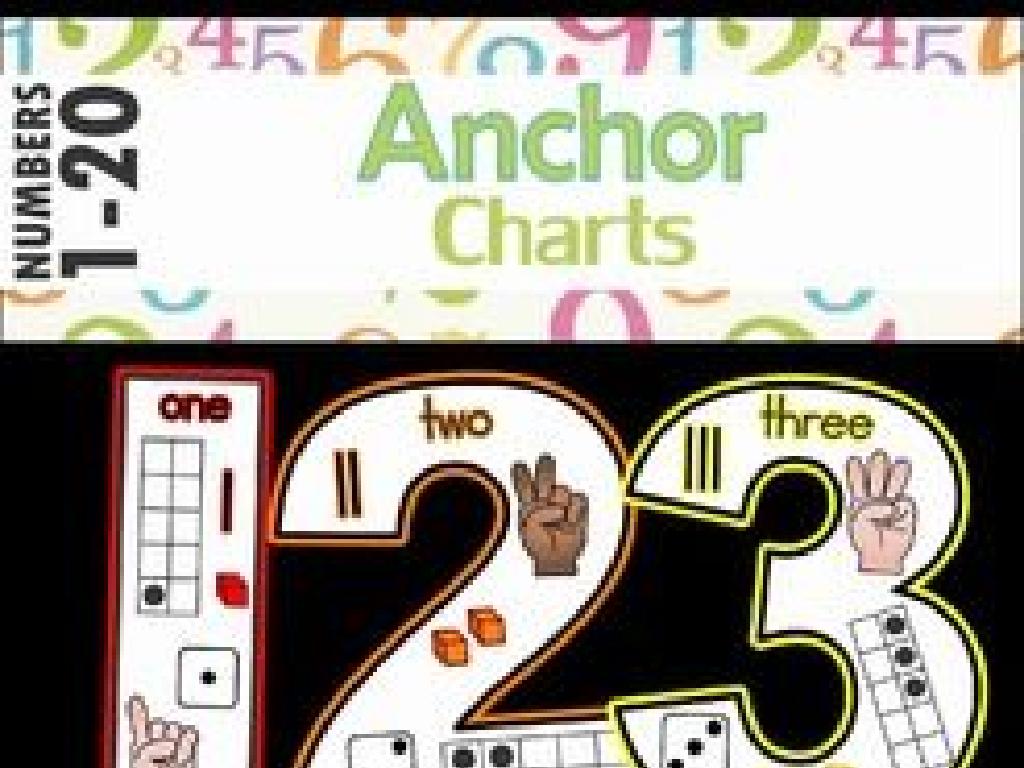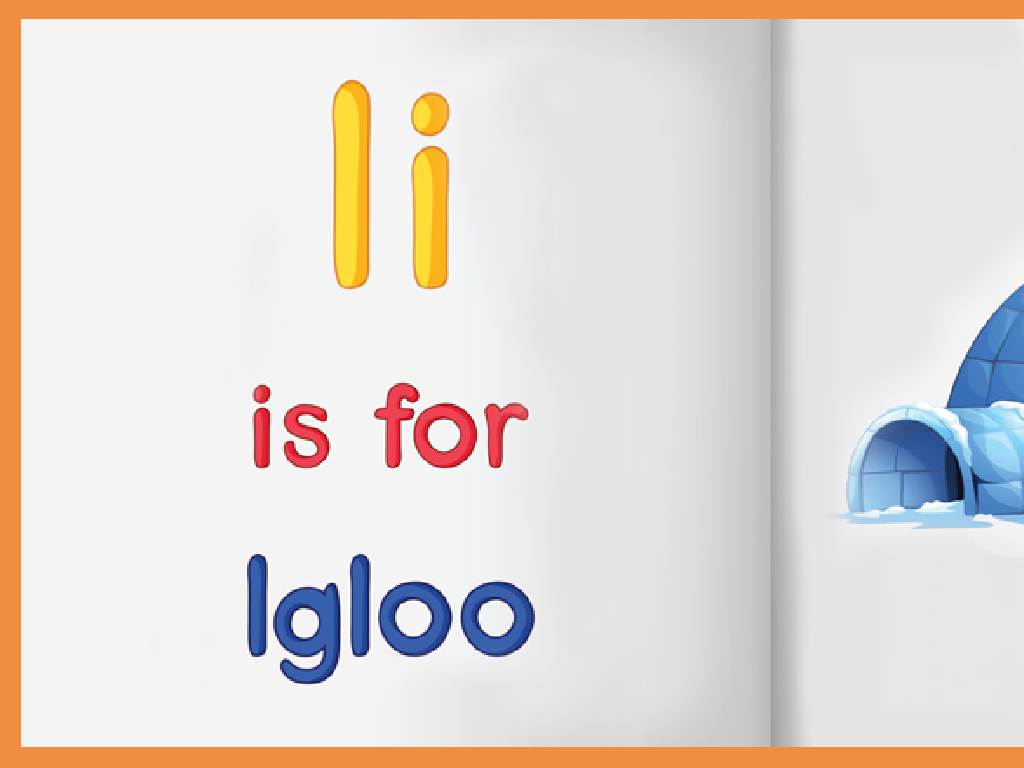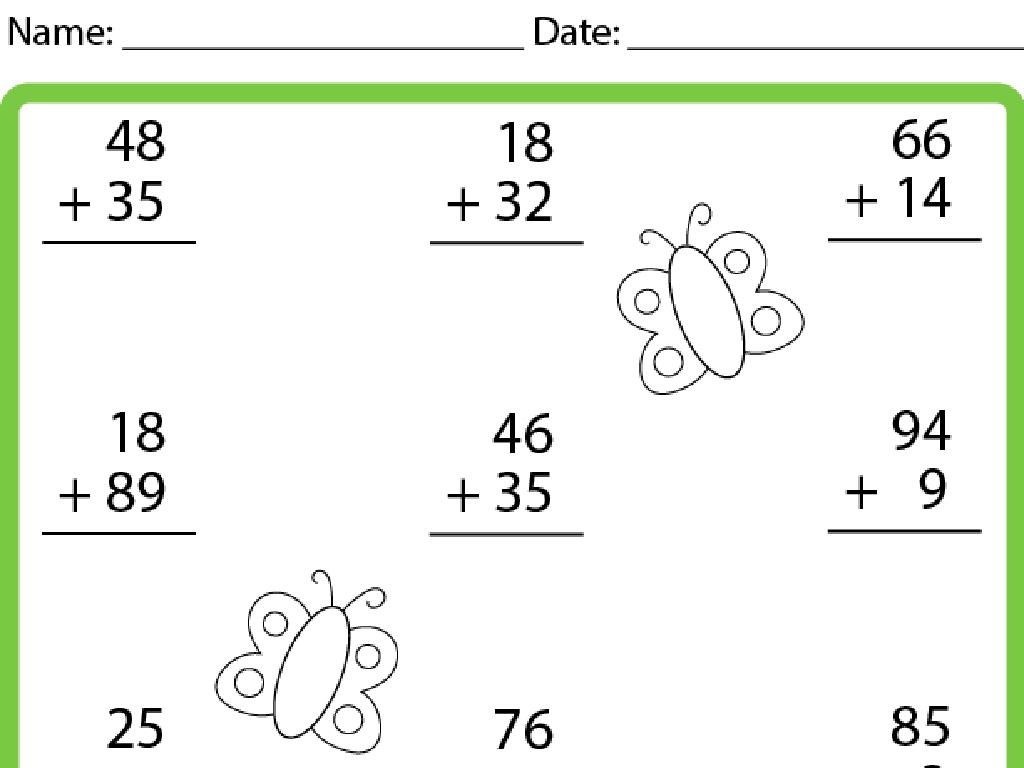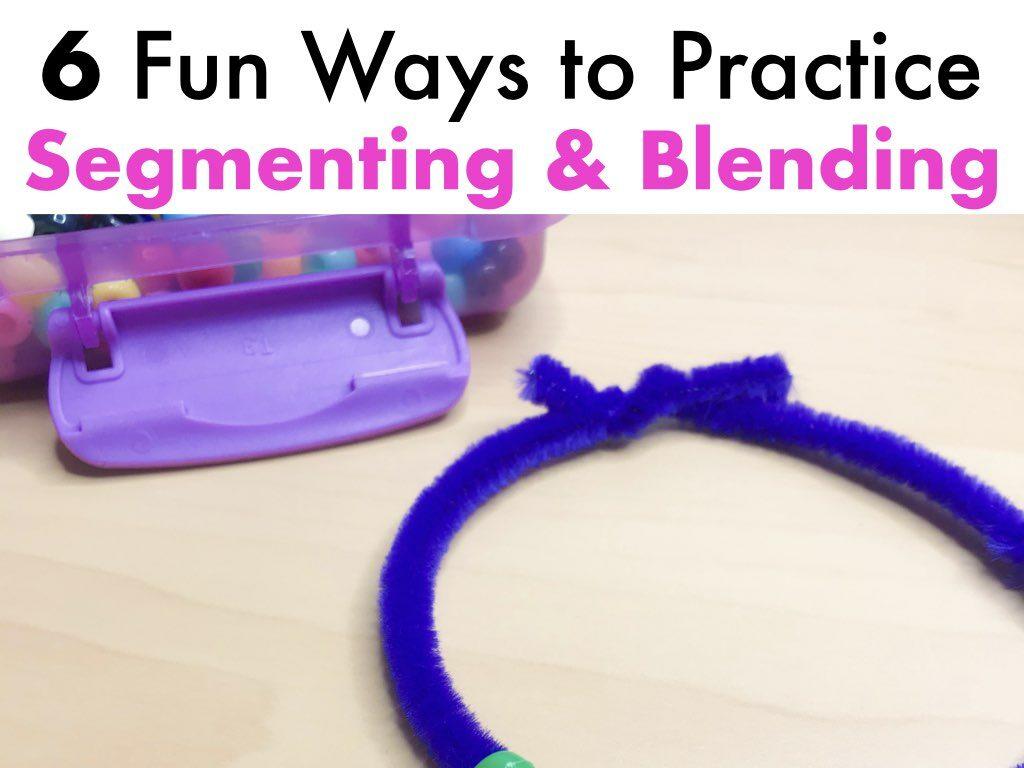Divide By 4
Subject: Math
Grade: Third grade
Topic: Division Skill Builders
Please LOG IN to download the presentation. Access is available to registered users only.
View More Content
Today’s Adventure: Divide by 4!
– What is division?
– Division as sharing equally
– If you have 12 cookies and 4 friends, how many does each get?
– Divide numbers by 4
– Practice with: 16 ÷ 4, 20 ÷ 4, 8 ÷ 4
– Importance of division skill
|
This slide introduces the concept of division to third-grade students, framing it as an exciting adventure. Begin by explaining division as a way of sharing things equally among a certain number of groups or people. Use relatable examples, such as dividing treats or toys, to illustrate the concept. Emphasize the practicality of division in everyday life and its importance as a fundamental math skill. Provide simple division problems involving the number 4 and encourage students to solve them. Reinforce the idea that division is an essential skill that helps us in various situations, from sharing snacks to understanding time and money.
Understanding Division: Sharing Equally
– Division is sharing equally
– Imagine splitting cookies with 3 friends
– It creates equal groups
– How many groups can you make with 12 stars?
– It shows items per group
– If you have 8 apples, how many does each friend get?
– Division by 4 example
|
This slide introduces the concept of division to third-grade students by relating it to the familiar activity of sharing items equally among friends. Emphasize that division is about fairness and making sure everyone gets the same amount. Use tangible examples like cookies or stars to illustrate how division works. For instance, if you have 12 cookies and 4 friends (including yourself), how do you share them so that everyone gets the same number? This leads to the concept of dividing by 4. Encourage students to think of division as a way to find out how many items each person gets when we share things equally. Provide additional examples with different numbers of items to solidify their understanding.
Dividing by 4: Making Equal Groups
– Division creates equal groups
– Division by 4 splits things into 4 same-sized groups
– Visualize 4 baskets for items
– Imagine having 4 baskets to sort things into
– Distribute items equally
– If we have 12 apples, we put 3 in each basket
– Each basket gets the same amount
|
This slide introduces the concept of division by 4 to third-grade students by relating it to the idea of creating equal groups. Start by explaining that division is a way of sharing things evenly. Use a relatable example, such as distributing apples into baskets, to help students visualize the process. Emphasize that each of the 4 groups (or baskets) will end up with the same number of items. Encourage students to think of other items they could divide by 4, and ask them to draw their own examples of dividing different numbers of items into 4 equal groups. This will help solidify their understanding of the concept.
Let’s Practice Division: Divide by 4
– Example: 12 cookies divided by 4
– 12 cookies shared equally among 4 friends
– How many cookies per group?
– Each friend gets 3 cookies
– Counting as we divide
– We count by fours to divide 12 cookies
– Understanding equal groups
|
This slide is designed to be interactive and engaging for the students. Start with the example of dividing 12 cookies by 4. Ask the students how many cookies each person would get if they were to share them equally. This visual example helps them understand the concept of division as making equal groups. Count together with the class to divide the cookies, reinforcing the concept of ‘divide by 4’. Emphasize that division is about making sure each group gets the same number of items. Encourage students to use objects like counters or drawings to practice this concept with different numbers.
Visualizing Division by 4
– Use pictures to understand division
– Pictures of objects can be grouped into fours to show division
– Bar models divide into 4 equal parts
– A bar model is split into 4 equal sections to represent division by 4
– Each part equals 1 group of the total
– If we have 12 items, each part of the bar model would show 3 items
– Practice with different numbers
|
This slide is aimed at helping third-grade students visualize the concept of division by using pictorial representations. By grouping images into sets of four, students can see how division breaks a whole into equal parts. Bar models are particularly effective as they provide a clear visual that each section of the bar is one group when we divide by four. Encourage students to draw their own bar models and divide different total numbers of items by four to see what one group would contain. This hands-on activity will reinforce their understanding of division as an equal partitioning of a number.
Division Facts with 4
– Memorize basic division by 4 facts
– Understand 4 divided by 4 equals 1
– When you divide a number by itself, the answer is always 1!
– Use flashcards for fun practice
– Flashcards help remember facts quickly
– Mastering division with 4
– Practice leads to quick recall during tests
|
This slide is aimed at helping third-grade students memorize and understand basic division facts involving the number 4. Emphasize the concept that any number divided by itself equals 1, using 4 divided by 4 as a specific example. Introduce flashcards as a fun and interactive way to practice these division facts. Encourage students to use flashcards at home with family or friends to enhance their learning experience. The goal is for students to become comfortable and quick at recalling division facts with 4, which will be beneficial for their math skills development and future math challenges.
Word Problems: Divide by 4
– Apply division in real situations
– Read a story problem aloud
– Solve by dividing by 4
– If there are 12 apples for 4 friends, how many does each get?
– Understand division application
|
This slide is aimed at helping students apply their division skills to real-world situations, enhancing their understanding of the concept of division by 4. Start by reading a story problem to the class, then guide them through the process of solving the problem by dividing the total number of objects by 4. For example, if a story describes 12 apples being shared equally among 4 friends, ask the students to calculate how many apples each friend would receive. Encourage the students to visualize the division of objects, which can be done using physical props or drawings, to ensure they grasp the concept of equal sharing. This practical application solidifies their division skills and prepares them for more complex problems.
Group Activity: Sharing Equally
– Share materials equally among 4
– Count out loud during sharing
– Ensure each student has the same
– Discuss the equality of groups
– Did everyone get the same amount? How did you check?
|
This group activity is designed to help students understand the concept of division by sharing materials equally among themselves. Divide the class into small groups of 4 students each and provide a set of items for them to share. Instruct them to distribute the items one by one, counting out loud to ensure fairness and equal sharing. After the activity, lead a discussion on how they made sure each student received the same number of items. This will reinforce the concept of division as an equal sharing process. Possible activities could include sharing a set of blocks, pencils, or stickers. Encourage students to think about division in real-life situations, such as sharing snacks or toys with friends.
Class Activity: Division Relay
– Form teams of four students
– Each student solves a step
– Work together to divide by 4
– Example: 16 ÷ 4, each student does one part
– First team to finish wins!
|
This activity is designed to encourage teamwork and reinforce the concept of division by 4. Divide the class into teams of four, and give each team a division problem that is divisible by 4. Each member of the team is responsible for one step of the division process. For example, the first student writes the problem, the second student divides the tens, the third student divides the ones, and the fourth student writes the answer. The first team to complete the problem correctly wins. Possible variations of the activity could include using different numbers to divide by 4, using word problems, or having a relay race where students run to the board to write their part of the solution.
Wrapping Up: Division by 4
– Congratulations on learning division by 4!
– Practice with your division worksheet
– Complete the provided worksheet to reinforce today’s lesson
– Share your learning next class
– Be prepared to discuss the problems you solved
– Keep practicing at home!
– Try dividing objects into groups of 4
|
This slide is designed to congratulate the students on their hard work during the lesson and to remind them of the importance of practice. The homework assignment is a worksheet that will help them to solidify their understanding of dividing by 4. Encourage students to be ready to share their experiences and any challenges they faced with the homework in the next class. This will help them to learn from each other and to reinforce their skills. Additionally, suggest that students practice by dividing everyday objects into groups of 4 to see the concept in action.






